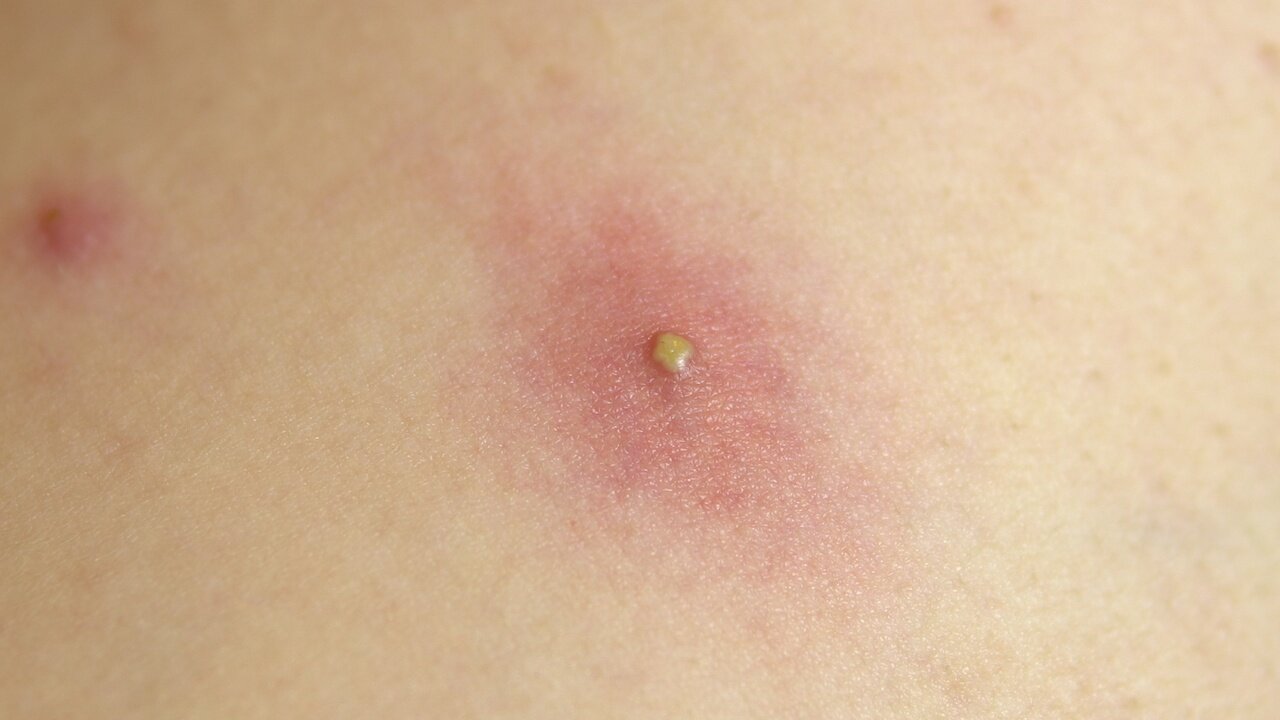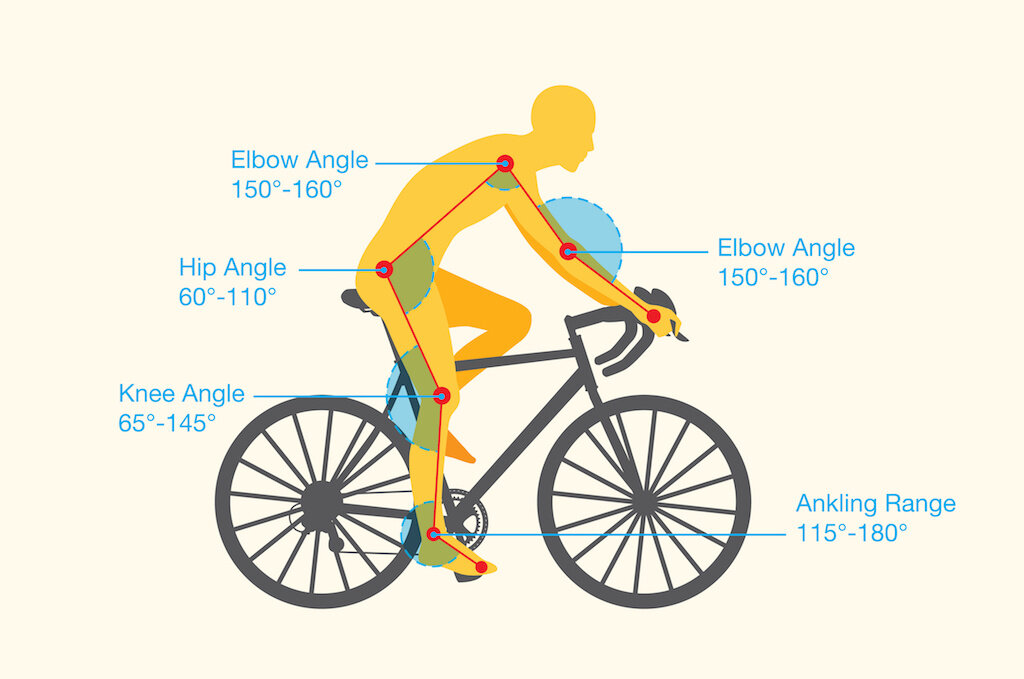“Doctors and gynecologists will give you all the medications, but it’s so rare that one warns you to just take off your shorts faster, clean up, the basic stuff”
What Are Saddle Sores
Saddle sores (skin abrasion, ulceration, and/or folliculitis) are inflammation or infection of the hair follicles. This bacteria-filled pore originates as a raised pink/red tender spot on the butt, inner thigh, and/or groin and most commonly between your genitalia and anus.
Saddle sores look like pimples or ingrown hairs, located in your sensitive areas that contact the bicycle seat and make sitting on your saddle very painful - thus the term ‘saddle sores.’
Furuncle is an infection at the base of a hair follicle.
Folliculitis is a boil that looks and feels like a pimple.
Saddle Sores: Causes
According to a 2020 study published in the Journal of Science and Medicine in Sport discussing saddles sores:
“These injuries are often attributed to anatomical features, as women have broader hips and thighs than men, affecting the saddle pressure distribution and increasing the risk of injury near the perineum. However, it is also influenced by the intensity and riding style which determines the pressure, sweat, and friction of the saddle area. In addition, incorrect saddle fit can result in increased compression of the perineum and neurovascular compromise.” - - - (bolding is from this author)
Too much saddle pressure and friction
Spending too much time in the seat, since saddles sores are caused by excessive pressure from your body-weight combined with rubbing.
Affects those cyclists that ride the most or those that have a sudden increase in mileage (i.e. training for a Century ride).
Heavier riders are at a greater risk.
Poorly fitted bicycle
A poor riding position can place excess weight on the saddle instead of pedals and handlebars. Ideally, about 40% of rider weight is placed on the saddle.
Incorrect saddle size or too soft
Too wide of a saddle causes chafing as your legs rub against it. Also, too soft a saddle compresses over long duration and increases both pressure and friction.
Substandard or dirty cycling shorts
Proper hygiene is critical to the prevention
Clean pair of cycling shorts for every ride
Over-training
Longer rides than normal or cycling at a higher intensity
Riding in heat and or humidity
The groin area is ripe for infections because of its moist environment and elevated temperature. Adding hotter temps and/or humidity to the equation only worsens it.
Not using chamois cream (lubrication)
“Soreness happens through poor positioning, inappropriate equipment, overuse, or lack of hygiene.”
Prevention of Saddle Sores
According to the researchers from the same 2020 article in the Journal of Science and Medicine in Sport:
“All consultants reported at least three or more methods to prevent and treat saddle sores and ranked their perceived effectiveness. The most frequently identified methods aimed at preventing saddle sores were using a chamois, altering saddle position and having meticulous personal hygiene.” - - - (bolding is from this author)
Keeping your butt, groin, and thighs dry is the most important thing you can do.
Wear clean, high quality padded cycling shorts (chamois) that wick away moisture (also, do not wear underwear with your cycling shorts)
Get a proper bike fit.
Slight adjustments (couple mm) to saddle/handlebar height or fore/aft position can make a world a difference. Is your bike set up for performance or comfort?
Shower ASAP after cycling.
If you can’t shower, change your sweat and bacteria-soaked clothing immediately and use antiseptic wet-wipes to clean your sensitive areas before putting on fresh clothes.
Shave or wax pubic hair no sooner than 24-hours before riding.
Waxing/shaving causes micro-abrasions in the skin making you more susceptible to saddle sores.
Use chamois cream (lubrication).
Not every ride calls for chamois cream but this cream fights friction between your skin and shorts and is essential for extra-long or hot/humid rides.
READ: Should I use Chamois Cream?
Saddles that support the ischial tuberosities (sit bones) while providing contours or space for your sensitive parts help prevent saddle sores.
Treatment of Saddle Sores
“An ounce of prevention is worth a pound of cure.”
These famous words by Benjamin Franklin are doubly true for saddle sores as even sitting down becomes a nightmare. Keeping an eye out for this issue is critical since the development of saddle sores begins with mild chafing and pain before extending to skin infections, ulcerations, and folliculitis if you continue to ride without proper care and treatment.
Once you have saddle sores the only cure is rest as the skin needs time to heal plus some antibiotics. If the skin around the area gets red, hot, swollen, very painful or you get a fever, then you will need to see a doctor open up the sores and drain them along with additional forms of medical professional treatments.
Recommendations for Treating Saddle Sores
Other Problems From Saddle Sores
The term “saddle sore” is an all-purpose term for issues ranging from chafing, bruises, ulcerated skin, boils, and pimple-like lesions in the bodily areas that come in contact with the bicycle seat.
Even mild saddle discomfort, such as chafing, causes your body to subconsciously compensate to avoid the pain.
For example, a saddle sore on your left butt cheek will cause you to lean to the right and place more weight on the right buttock. This causes a host of cascading effects, such as knee problems as this rightward lean effectively makes one leg longer while simultaneously making one leg shorter, etc.
New Cyclists & Saddle Discomfort
In the book “Bicycling Magazine’s New Cyclist Handbook,” Ben Hewitt states:
“New cyclists are prone to saddle discomforts such as chafing and bruising, although they usually aren’t riding enough to run into problems with lesions. A key to dealing with general soreness is to have good riding position, plus a good seat. After that, regular riding helps to toughen the sitting area. This is often referred to as saddle time, and it’s something that every rider needs in order to get more comfortable on the bike.”
If you are new to cycling and it’s a pain in your butt, answer a few questions:
Are you using the same seat your bike came with?? If yes, the chances that a stock saddle is your ideal saddle are very low.
Are you riding with padded cycling shorts, without underwear?
Did you get your bike fitted for you, such as seat height, handlebar height, saddle fore/aft, cleat position, etc??
Are you slowly increasing your weekly mileage or riding time?
Need Professional Assistance dialing-in your bike?
Jesse (Director of Pedal Chile) lives in La Patagonia of Chile. Jesse has a Master of Science in Health and Human Performance and a Bachelor of Science in Kinesiology. Hobbies: Riding singletrack, snowboarding, reading, researching, coaching, and writing.
Sources & References
Andrews, Guy, and Simon Doughty. The Cyclist’s Training Manual: Fitness and Skills for Every Rider. Amazon, 1st edition ed., Bloomsbury Sport, 30 June 2013.
Baker, Arnie. Bicycling Medicine : Cycling Health, Fitness & Injury Explained : For Riders & Racers of All Levels. San Diego, Ca, Argo Pub, 1995.
Bury, Keira, et al. “Prevalence, Prevention and Treatment of Saddle Sores among Female Competitive Cyclists: A Scoping Review Protocol.” Methods and Protocols, vol. 3, no. 1, 6 Jan. 2020, p. 4, 10.3390/mps3010004.
Hewitt, Ben. Bicycling Magazine’s New Cyclist Handbook : Ride with Confidence and Avoid Common Pitfalls. Emmaus, Pa., Rodale, 2005.
Hurford, Molly. Saddle, Sore : Ride Comfortable, Ride Happy. New Jersey?, Molly Hurford, 2016.
Miller, Michael, and David Berry. Back in the Saddle Again: How to Prevent Cycling Saddle Sores. Western Michigan University, 2007.
Norman, Mackenzie, and Kenneth Vitale. “‘Bumpy’ Ride for the Female Cyclist: A Rare Case of Perineal Nodular Induration, the Ischial Hygroma.” International Journal of Surgery Case Reports, vol. 73, 2020, pp. 277–280.
Rabin, Matt, and Robert Hicks. The Pain-Free Cyclist : Conquer Injury & Find Your Cycling Nirvana. London, Bloomsbury, 2015.
















